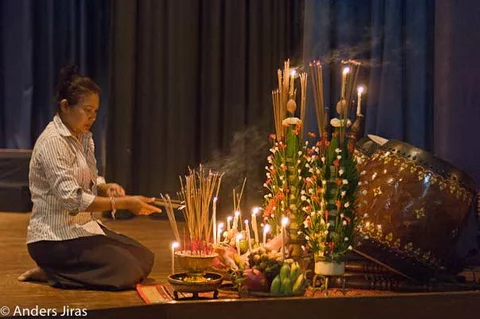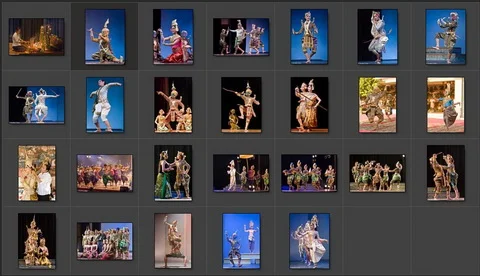Cambodian Dance Honored at National Museum Exhibit

Phnom Penh, Cambodia — A millennium ago, the Khmer civilization flourished in Southeast Asia and its legacy still shapes the region’s art and culture. The magnificent Khmer architecture is recognized worldwide in the temple of Angkor Wat and the stone faces of the Bayon. But this creative empire left a living legacy that still fascinates audiences today: the art of Cambodian dance.

Dazzling images of the Royal Ballet of Cambodia captured by Swedish photographer Anders Jirås form the basis of a special exhibit at the National Museum of Cambodia in Phnom Penh. Exhibition runs November 5, 2010 to January 31, 2011.

An architectural photographer by trade, Anders Jirås first visited Cambodia in 2005 and became interested in documenting the country’s unique performing arts. His first experiences with Cambodian performances were with students of Cambodian Living Arts and with Sovanna Phum, which specializes in the art of shadow puppetry. He was also captivated by a presentation of “les Nuits d’Angkor”, an annual dance presentation of the Ramayana by the Royal Ballet that began in 1995.
”The Swedish winter convinced me to return to Cambodia!” relates Anders. “This time I met Darryl Collins, an independent researcher working at the National Museum. In discussions with him and the museum directors the idea for this exhibit took shape.”
In 2008 Anders photographed the Royal Ballet for the first time. Through the connection and through the Lakhaon Festival at the French Cultural Center began photographing a wider range of Cambodian performing arts. But according to Anders Swedish interest in Cambodian Dance is not new, and actually began 99 years ago, with the visit of the Swedish Prince William in 1911. In the account of his trip, In the Land of the Sun, Prince William wrote:
“The first part of the programme was a prehistoric ballet of the gods…the dance contained a number of characteristic dances, such as flower, staff, fan dances, and so on, in which there was some very expert juggling with the different objects.
“One number, which specially took the fancy of the populace, was entitled ‘An angel, riding on a naga pursues a garuda through the air.’ The leading persons were hung from the roof by wires, which could be moved in elliptical orbits round the stage. Sprawling and gesticulating, they chased each other round the arena, looking exactly like children’s toys dangling on the end of a string.”
Cambodian dance is perhaps less flamboyant today, but no less fascinating as the series of full color photos in this special exhibit shows.
The exhibit was supported by Friends of Khmer Culture, a non-profit educational group with a long history of supporting positive projects in Cambodia.

NATIONAL MUSEUM OF CAMBODIA INFORMATION
National Museum of Cambodia Official Site
Treasures of Khmer Culture-The National Museum of Cambodia
Cambodia’s National Museum Marks 90th Anniversary
CAMBODIAN DANCE – VIRTUAL PHOTO EXHIBIT

See the entire collection on the website of photographer Anders Jirås.
Article by Kent Davis, www.devata.org
NOTE: All photos of the Royal Ballet of Cambodia are copyright protected by Anders Jirås. For reprint permissions please contact the photographer directly.
